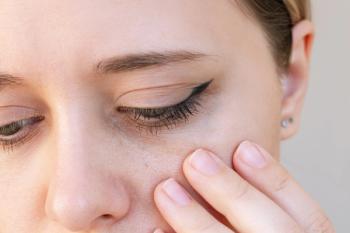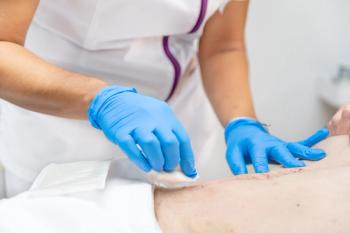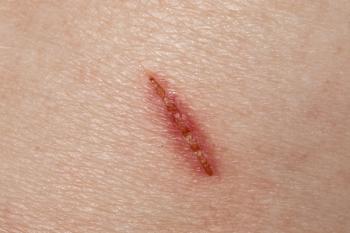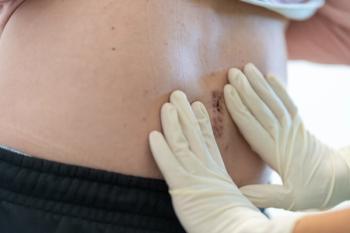
Wound Care Market Skyrockets, but Still Lacks Standardization
New products focus on multimodal healing with absorption, antibacterial, and regenerative properties.
Wound treatment needs to work smarter, not harder, according to new research.
Successful wound treatment currently costs more than $50 billion per year to attain in the United States alone.1 Medicare alone spends between $28 billion and $97 billion per year on managing acute and chronic wounds, with the surgical care of wounds in the elderly, diabetics, and obese patients making up the largest share of this cost.2
While the cost of wound care supplies and dressings may seem prohibitive to proactive management of complex wounds, the rising global market for wound care supplies around the world paints a different picture. Providing surgical intervention to promote healing, treating infections, and dealing with long-term complications like scarring or nerve damage can make the long-term costs of wound care far outweigh the initial cost of more effective treatment.
Wound care has traditionally fallen under the umbrella of nursing care, but studies show that an interdisciplinary approach that involves specialties like physical therapy may be most beneficial.
One study, published in March 2022 in the International Wound Journal, summarized data on a number of emerging wound care strategies ranging from stem cell therapy to smart dressing materials and skin substitutes.1
The basics of wound care focus on dressings, and in recent years, the choices of wound care products have increased significantly, but with little guidance on the best uses or standard protocols for these dressings.
In an effort to clear up the confusion on newer wound dressing options, the authors of the March 2022 study highlighted the results of clinical trials for a number of wound treatment strategies.
The transplantation of skin or stem cells is one strategy for helping to regenerate tissue over healing wounds, the study notes. This treatment is typically reserved for larger wounds or burns.
There are several ways skin and stem cells can be transplanted.
- Autograft. An autograft is a transplantation of skin or tissue from somewhere else on the patient’s body. This type of transplant is generally recognized as the standard when it comes to the care of burns and debrided wounds, but there is a risk of infection or injury at the donated site. However, the risk of tissue rejection is minimal, the report reveals.
- Allograft. An allograft is a transplantation of healthy tissue from another source, typically a donor or cadaver. While this option may be easily accessible and widely used, it’s usually a temporary solution due to the high risk of the recipient rejecting the donated tissue or cells.
- Xenograft. Xenografts are temporary biological dressings that can be used when neither autograft nor allograft are options. Tissue is usually taken from bovine or porcine donors, though, so the risks of rejection and cross-contamination have to be carefully considered.
- Skin substitutes. Skin substitutes are another option, and are available in both temporary and permanent formulas. Some of the most common types of skin substitute are made from nylon and silicone mesh (Biobrane) or a dual layer of nylon and collagen (Transcyte)—both temporary options—or the permanent substitute made of keratinocyte and collagen gel layers (Apligraf).
- Bioengineered solutions. This method usually involves the use of stem cells or other autografts proliferated through micrografts. These treatments are highly effective for closing wound beds after debriding necrotic wounds, but the cost and the fact that it’s usually only done at teaching hospitals makes access difficult. According to the report, generating this type of skin replacement can cost around $800 per 50 cm2. Stem cells taken from embryonic or adult cells (like bone marrow) are also an option for bioengineered skin solutions, but they can take up to a month to produce and there is a lack of standardization in the practice.
- Platelet therapy. Another option that can be done as an autograft or allograft donation, platelet-rich fibrin and other therapies use concentrated infusions of platelets and growth factors—up to 10 times that of a normal concentration in the blood—to stimulate skin regeneration and accelerate wound healing. This therapy is particularly low risk when autologous donations are made to create the infusion.
Dressings are another treatment strategy. These involve some type of physical barrier to cover the wound in order to protect it from further damage and infection, and accelerate healing. There are many varieties of dressings for many types of wounds, but very little standardization.
Dressings are split into three basic categories:
- Traditional dressings are used to stop bleeding and limit contact with the wound bed.
- Low-cost, simple passive dressings absorb exudate but can stick to the wound bed and complicate healing. Despite these drawbacks, these dressings are usually the most commonly used, according to the report.
- Modern wound dressings can be made of things like foams, films, hydrogels, or hydrocolloids that are more biocompatible and promote healing instead of just providing absorption or covering.
Nanomaterials and smart dressings are another emerging field in wound care. These materials usually include things like zinc, copper, and silver to provide management of bleeding, infection, and new cell growth. Some popular options that fall into these categories include dressing made with grapheme, and instruments that provide therapy specific to the wound surface. Negative pressure wound therapy is the common treatment of this type, and promotes healing by removing exudate to reduce swelling and speed up the closing of wound edges. This therapy is also helpful in promoting increased blood flow and new tissue formation.
Other instrumental or targeted “smart” therapies can include things like:
- Hyperbaric oxygen therapy
- Low-level laser therapy
- Cold atmospheric pressure plasma
Future treatments may combine several of these methods and materials, with the study specifically noting a newer cost-effective product made of a scaffolded graphene-based nanoparticle material called BioHastaflex.
Despite all of these options, the report notes that adequate wound care is still considered an unmet clinical need. The complex nature of wound healing leaves a lot of room for the development of effective treatments, the authors conclude, with the multi-billion nature of the wound care industry serving as an enticing motivator.
References
- Mirhaj M, et al. Emerging treatment strategies in wound care. International Wound Journal. March 2022;19(7):`934-1954. doi:10.1111/lwj.13786
- Sen CK. Human Wounds and Its Burden: An Updated Compendium of Estimates. Adv Wound Care (New Rochelle). 2019;8(2):39-48. doi:10.1089/wound.2019.0946
Newsletter
Like what you’re reading? Subscribe to Dermatology Times for weekly updates on therapies, innovations, and real-world practice tips.

















